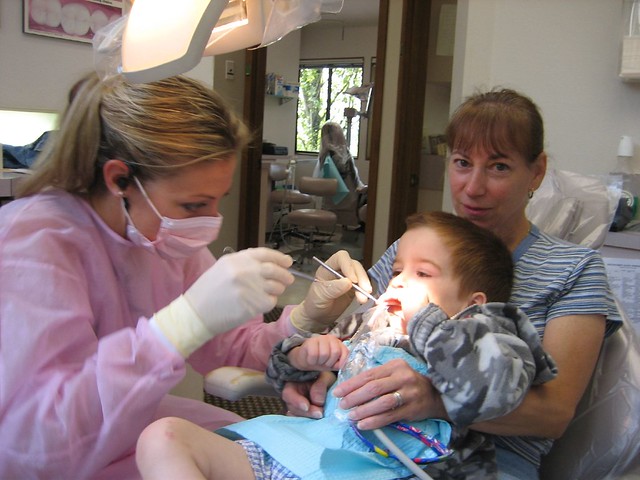An interesting article titled “Changes in dental anxiety among 15‐ to 21‐year‐olds. A 2‐year longitudinal analysis based on the Tromsø study: Fit futures” written by Nermo et al. appears in Community Dentistry and Oral Epidemiology (vol. 47, 2019, pp. 127-133). The article sought to explore the continuation of high dental anxiety over 2 years.
In the article the authors explored data from The Tromsø Study conducted in Norway. The authors explored data from participants who were under the age of 18 at baseline data collection and also had data collected two years later. This lead to 685 participants with 377 females and 308 males. Corah’s Dental Anxiety Scale was used to measure dental anxiety on a score from 4 to 20 with higher scores indicating more anxiety. Those scores that were 13 and higher were determined to be in dentally anxious patients. The authors said a change in dental anxiety occurred over the two year period if the dental anxiety scale score changed by more than 2. Questionnaires were also asked to the study participants including if they have ever missed a dental appointment due to fear and how painful on average they thought it is to go to the dentist. The authors also performed Hopkins Symptom Checklist (HSCL‐10) to measure symptoms of depression and anxiety. In addition dental carries were registered using the Decayed, Missing, Filled, Surfaces (DMFS) index.
By studying the results the authors found a significant change in both
Dental Anxiety Scale and Hopkins Symptom Checklist over the two year study period. The Dental Anxiety Scale significantly decreased over the two years while the Hopkins Symptom Checklist significantly increased over the two years. Regarding the Dental Anxiety Scale change scores 476 participants reported no change while 108 participants reported less dental anxiety and 78 participants reported more dental anxiety. The median DMFS score was lowest in the group with no change in dental anxiety while both groups with changes in Dental Anxiety Scale scores recorded higher DMFS scores.

The authors found that high psychological distress, more caries experience
and high dental anxiety scores predicted high dental anxiety scores later on in time in youths. The authors also found that experiencing psychological distress was a strong predictor of dental anxiety and thus mental health symptoms can lead to the development and continuation of dental anxiety. Thus stressful life events and
mental health problems in adolescents can stick with a patient through their life.
The article states
“…this study also implies that reduced estimates of pain at the dentist may decrease dental anxiety…The current findings can serve to redefine dental treatment situations in young individuals as not mere potential negative conditioning events, but as a ‘window of opportunity’ where dental health professionals have the opportunity to ensure a positive experience for young patient”
The authors feel that while a person is an adolescent they are vulnerable to have dental anxiety both increase and also decrease. For example non-painful events regarding dental caries can lead to reduced dental anxiety while painful events regarding dental caries can lead to increased dental anxiety. Thus the authors feel that dental treatment received in a trustful relation to the dental staff, and proper pain control for this dental treatment are paramount towards getting the patient back in the dental chair in the future. It has been shown that dental fear and anxiety could develop due to family related issues such as parents verbalizing their fear of the dentist to their children. It is therefore possible that family counseling as discussed for example on Regain.us could be useful to help shape an adolescent to have less dental anxiety. Since the authors feel that stressful life events and problems in adolescents can stick around for the rest of that persons adult life it would be beneficial to address any stress or conflict present within the family dynamic. Further improving the family dynamic may allow for children to have more confidence going to the dentist and more likely experience positive treatment experiences while there. This would allow them to not be as afraid in the future of dentist visits and lead to improved dental health.

1 thought on “Changes in Dental Anxiety over Time”